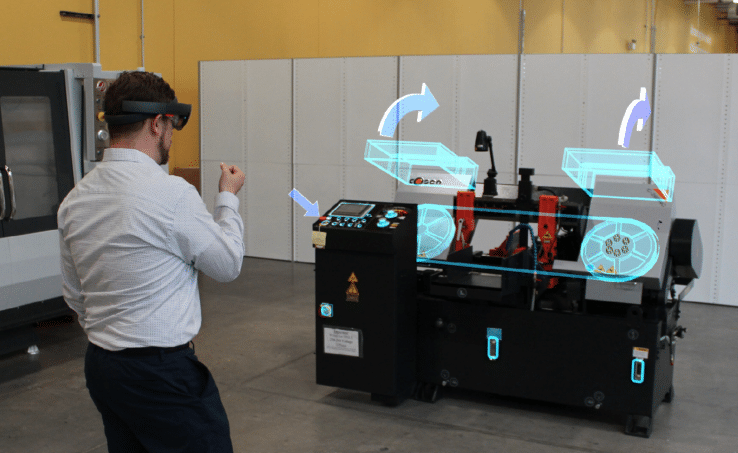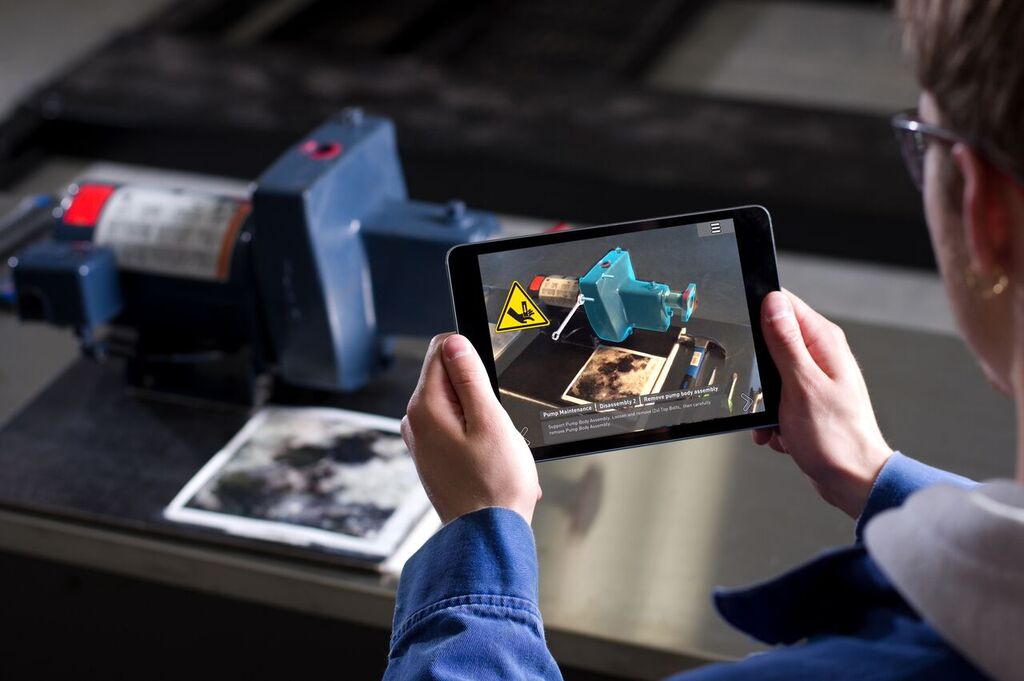
Though consumer AR has a bright near-term future on smartphones — thanks to accelerants like ARKit — AR’s fully realized vision of a glasses-based world will arrive sooner in the enterprise.
This has a lot to do with a clearer ROI proposition (think manufacturing output), but it’s also about style and culture. The factors that make glasses unrealistic as a consumer form factor (strapped to one’s face) is what makes it advantageous in enterprise apps (hands-free assembly).
Remote Utility
This is where Scope AR hangs its hat. One of the exemplars of enterprise AR today, it provides software for manufacturing, maintenance and other functions to get hands free reference material via AR. And the use cases are just getting started, according to CEO Scott Montgomerie.
“We’re seeing use cases across virtually every heavy industry,” he told ARtillry. “Automotive, utilities, telcos, energy, mining, oil & gas… you name it. It’s a very horizontal technology. It’s wherever there are remote workers, or there’s no one on site that can solve a problem.”
One example is manufacturing lines that output millions of units per day. This entails frequent switching of assembly lines, which means margin-depleting downtime. Graphics-guided instruction and overlays can make that happen a lot faster. Utilities and heavy equipment are also a focus.
“We’re trying to target our salesforce on utilities and telcos,” said Montgomerie, “because those markets have the best metrics for us to improve ROI. And we did a partnership with Catepillar: it’s about equipment manufacturers that need to provide support for their end users.”

Immersive Evolution
It all takes form in two products: Remote AR lets remote experts provide visually-guided assistance through dialogue, and positionally-accurate two-way annotations drawn in real time. WorkLink is an authoring platform for graphics to be overlaid on a given workspace or machine.
For Remote AR, Montgomerie likens it to Webex’ and call conferencing providers’ longtime proposition: remote interaction is cheaper than travel. This is the more immersive evolution of that principle, and yet another value proposition backing the ROI premise for enterprise AR.
As for the go-to-market strategy, Scope AR focuses on software and utilizes proven hardware already in the market such as tablets and HoloLens. This approach lets it focus on what it does best, and apply it to the products of likewise-focused hardware players.
This also creates a sort of symbiosis, he says. The content it’s bringing to the table alleviates the classic “chicken and egg” dilemma. In other words, creating content and applications for a given piece of hardware boosts its value and adoption, and seeds industry growth.

Open for Business
Speaking of symbiosis, Montgomerie names current business objectives as scaling the business sales team, now that it proved a product-market fit. This includes expanding support for devices, especially as hardware evolves in areas like portability. Feature development is also key.
“We’re getting a lot of feedback from customers on what they want,” said Montgomerie. “They want to tie into their back-end ERP systems, IOT integrations, and better support for devices. We’ll be announcing support for another wearable in the next few weeks or months.”
For a deeper dive on AR & VR insights, see ARtillry’s new intelligence subscription, and sign up for the free ARtillry Weekly newsletter.
Disclosure: ARtillry has no financial stake in the companies mentioned in this post, nor received payment for its production. Disclosure and ethics policy can be seen here.
Header image credit: Microsoft
